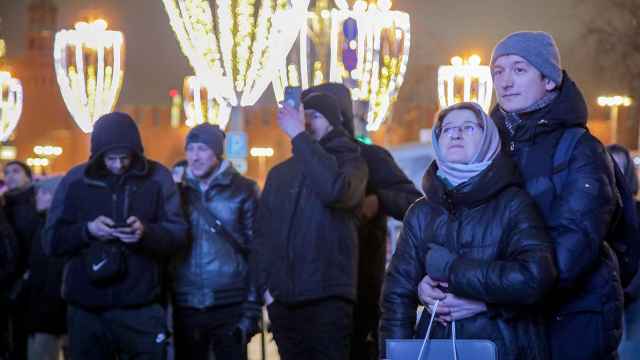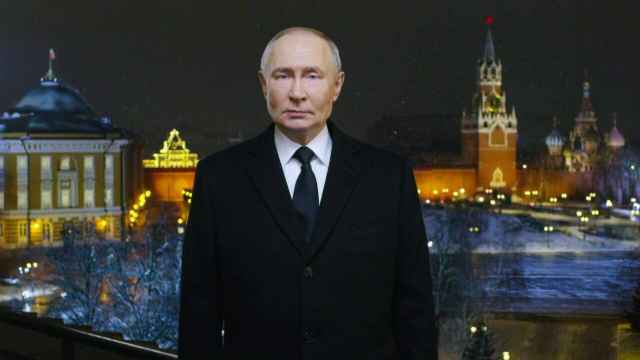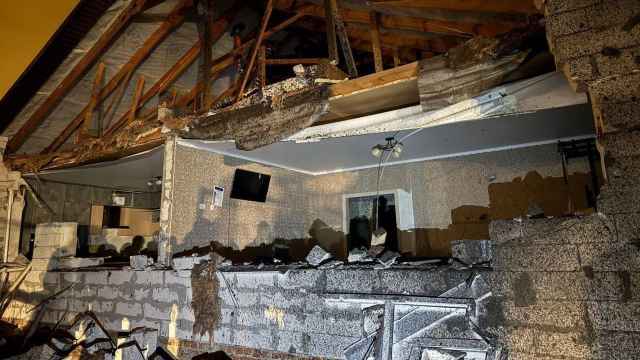Planned improvements to transportation infrastructure in the Moscow region that yield greater connectivity to the city will boost property prices in several regional towns by 10 to 15 percent, according to research by Metrium real estate agency.
Experts highlighted 8 main areas in the Moscow region where traffic flow improvement over the next few years will be the most significant. If government plans are realized, these areas will not only see better and wider roads, but also transport interchange hubs, or TIHs — where passengers can switch between different means of conveyance — and, possibly, tram lines. All of these are expected to convince drivers to get off the streets and onto public transport.
Having fewer traffic jams will make several satellite cities near Moscow more attractive for living and, as a consequence, push up real estate prices there, the report said.
But some experts point to previously promised projects that remain unrealized as reason for skepticism and a more detailed approach.
Dmitrovskoye Shosse to the north of the capital will see the most improvement. The road is being reconstructed on an 11-kilometer stretch going from MKAD to Lobnya. This segment is well known for its congestion, especially during daily rush hours to and from Moscow as well as during end-of-the-week car flow out of the city.
The road development program for Dmitrovskoye Shosse has 26 problem zones that are to be improved along this stretch by 2015. It also envisions a new TIH with parking to be built 2 kilometers inside the MKAD near Lyanozovo metro station.
Another notorious bottleneck north of the city also scheduled for relief is the 16-kilometer stretch of Leningradskoye Shosse to be reconstructed by 2016 between Khimki and the Mezhdunarodnoye and Sheremetyevskoye Shosses, which lead to Sheremetyevo airport.
The highway will be widened and have up to 10 lanes total, some of which will be exclusively dedicated to public transport. Neighboring streets are also to be broadened and their junctions with Leningradskoye Shosse improved. A TIH will be built in 2015 near Ulitsa Dybenko metro station.
These projects and the authorities' plans to eventually set up a light tram system running from Khimki to Moscow, are apt to push up prices for real estate in the area starting from 2015, Metrium experts said.
Shchyolkovskoye Shosse northeast of the capital is also expected to see major traffic improvement. Under the road development plan, left turns will be eliminated on a 32-kilometer stretch of highway extending from the MKAD into the Moscow region.
Additionally, a new six-lane road running parallel to Shchyolkovskoye Shosse, starting in the center from Otkrytoe Shosse near Ulitsa Podbelskogo metro station and heading out to the Moscow region towns of Schyolkovo, Balashikha and Zvyozdny, could be constructed as early as 2015, according to the latest government plans.
A TIH at Ulitsa Podbelskogo metro station 2.5 kilometers inside the MKAD is already functioning.
"Improvement of the transportation situation by 2015 will make residential property more attractive in cities like Shchyolkovo and Balashikha and, to lesser extent, Pushkino, located 19 kilometers from Moscow," the Metrium report said.
Yaroslavskoye Shosse, north of Moscow, will see major reconstruction as well. Plans are to turn it into a 10-lane highway by 2015 on the stretch going from the MKAD to Mytishchi, with 2-lane service roads running parallel to it each way, which will give easier access to the Mytishchi's districts and inner roads. The highway will be rebuilt between the 6th and 11th kilometers, near Korolev, where an 8-lane bypass running next to the existing road is planned.
Road improvement work is also planned for the Novoryazanskoye, Mozhaiskoye, Nosovikhinskoe and Volokolamskoye Shosses.
Volokolamskoye Shosse from the MKAD through Krasnogorsk is frequently congested because it passes through a densely populated area. This segment is to be reconstructed and widened to 4 lanes in each direction by 2016.
"Reconstruction of Volokolamskoye Shosse will have an effect on real estate prices in the region which are likely to go up already starting in 2014 with peak levels projected for 2016 when construction works are planned to be completed," the report said.
Krasnogorsk today is a hive of developer activity in the Moscow region with 23 major real estate projects, including a total of 5 million square meter of apartment space, currently under construction.
While real estate experts agree that transport interconnectivity may have an effect on housing prices, some are skeptical of the actual completion of plans announced by the authorities.
‘Improvement of the transportation situation by 2015 will make residential property more attractive’
Metrium Group
"For example, there were plans to set up a light rail line going from Shosse Entusiastov metro station to Balashikha by 2015. The actual dates to start the project were postponed several times and today it is unclear when the works will begin," said Sofia Lebedeva, general director of the Miel Novostroiki real estate agency.
Instead, she advised buyers and investors to look at regions where new metro stations are to open soon.
By the end of the year a new metro station will open in Kotelniki. Two more stations are to open in 2013 in the southwest of the capital.
Metrium experts also included new metro stations in their report and identified several more to be opened in the coming years.
A new subway station called Spartak is to open near Krasnogorsk in 2014, 3.5 kilometers from the MKAD on the Tagansko-Krasnopresnenskaya purple line.
Chelobityevo metro station and a TIH will appear at the border between Moscow and Mytishchi by 2015, significantly easing congestion in that area and giving a boost to real estate price growth in Mytishchi and Korolev by then, Metrium experts said.
Other experts also give estimates that real estate prices will go up in the newly built districts, especially if there are plans to open a subway station there.
"An increase of cost per square meter going from ground stage to completion could be, on average, around 35 percent. If the transport situation in the given area improves as new metro stations appear, the price could go up even higher," said Olga Novikova, deputy general director of NDV-Nedvizhimost real estate agency.
Forecast for price levels of residential property in Moscow region cities that will see improved transportation infrastructure.
|
Suburban City |
Kilometers from the MKAD |
Average price per newly built square meter in rubles. |
Average price per pre-owned square meter in rubles. |
Peak price level year |
|
Dmitrovskoye Shosse | ||||
|
Lobnya |
14 |
59 200 |
87 000 |
2015 |
|
Dolgoprudny |
6 |
67 500 |
106 000 |
2015 |
|
Leningradskoye Shosse | ||||
|
Khimki |
3 |
90 000 |
110 000 |
2016 |
|
Shchyolkovskoye Shosse | ||||
|
Balashikha |
8 |
69 000 |
89 000 |
2015 |
|
Shchyolkovo |
19 |
67 000 |
80 000 |
2015 |
|
Yaroslavskoye Shosse | ||||
|
Mytishchi |
3 |
85 000 |
111 000 |
2015 |
|
Korolev |
12 |
83 000 |
98 000 |
2015 |
|
Pushkino |
19 |
67 500 |
87 000 |
2015 |
|
Novoryazanskoye Shosse | ||||
|
Lyubertsy |
2 |
82 500 |
104 000 |
2013 |
|
Kotelniki |
0 |
66 800 |
107 000 |
2013 |
|
Nosovikhinskoye Shosse | ||||
|
Balashikha |
8 |
69 000 |
89 000 |
2015 |
|
Zheleznodorozhny |
12 |
67 000 |
89 000 |
2018 |
|
Noginsk |
37 |
57 300 |
61 000 |
2018 |
|
Volokolamskoye Shosse | ||||
|
Krasnogorsk |
4 |
87 000 |
104 000 |
2016 |
|
Mozhaiskoye Shosse | ||||
|
Skolkovo |
2 |
170 000 |
180 000 |
2014 |
Source: Metrium Group
Contact the author at [email protected]
A Message from The Moscow Times:
Dear readers,
We are facing unprecedented challenges. Russia's Prosecutor General's Office has designated The Moscow Times as an "undesirable" organization, criminalizing our work and putting our staff at risk of prosecution. This follows our earlier unjust labeling as a "foreign agent."
These actions are direct attempts to silence independent journalism in Russia. The authorities claim our work "discredits the decisions of the Russian leadership." We see things differently: we strive to provide accurate, unbiased reporting on Russia.
We, the journalists of The Moscow Times, refuse to be silenced. But to continue our work, we need your help.
Your support, no matter how small, makes a world of difference. If you can, please support us monthly starting from just $2. It's quick to set up, and every contribution makes a significant impact.
By supporting The Moscow Times, you're defending open, independent journalism in the face of repression. Thank you for standing with us.
Remind me later.





